ISS-50-LU-FE – Application example
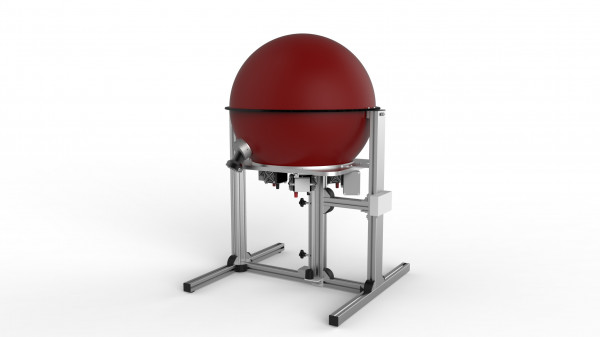
In photography, fisheye lenses are lenses used to create a hemispherical image. They have an ultra-wide angle >180°. Therefore, hemispherical luminous sources with high uniformity levels of the output luminance are needed for white balance of fisheye cameras. This article explains how uniform light sources are used for white balance of fisheye cameras that have 180° viewing angle. The presented integrating sphere-based source enables white balance with three different light spectra adapted to different lighting conditions to suit the intended applications.
Setup with the UM modular construction system
Usually, the 50 cm integrating sphere is configured using standard modules from Gigahertz-Optik’s integrating sphere construction kits. Only in exceptional cases do application-specific modules have to be used. These are also designed and manufactured by Gigahertz-Optik.
Hemispherical luminous area
Uniform light sources are characterized by their luminous outputs, which have very high luminance uniformity. Normally, these sources have an open port in the housing of the integrating sphere. For white balance of ultra-wide-angle and fisheye cameras, there are several reasons why the cameras should not be positioned on this port.
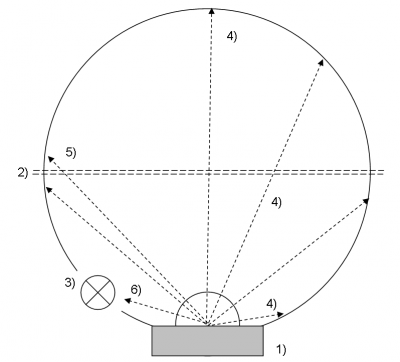 1) Fisheye camera 2) Sphere GAP between the hemispheres 3) Lamp 4) Conflict – different distances 5) Conflict – GAP illustration 6) Conflict – lamp in the field of view
1) Fisheye camera 2) Sphere GAP between the hemispheres 3) Lamp 4) Conflict – different distances 5) Conflict – GAP illustration 6) Conflict – lamp in the field of view
When designing the uniform light source described here, much emphasis was placed on ensuring a hemispherical luminous area that is as “ideal” as possible. It is well suited for cameras with an ultra-wide angle or fisheye lenses, only if they are aligned at the center of the sphere. Here, the camera must be positioned such that the seam between the two hemispheres is outside the field of view. This means that the camera must be placed slightly above the seam.
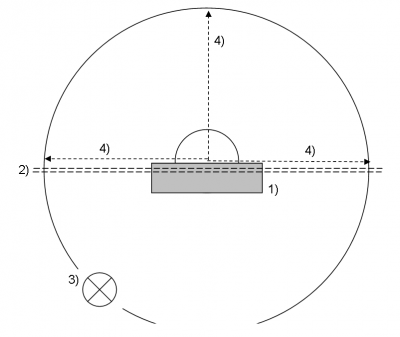 1) Fisheye camera 2) Sphere GAP between the hemispheres 3) Lamp 4) Hemispherical luminous area
1) Fisheye camera 2) Sphere GAP between the hemispheres 3) Lamp 4) Hemispherical luminous area
The test camera is inserted into the sphere with a manipulator onto which the test sockets can be attached. A transparent dome with a 70 mm diameter protects the interior of the sphere.
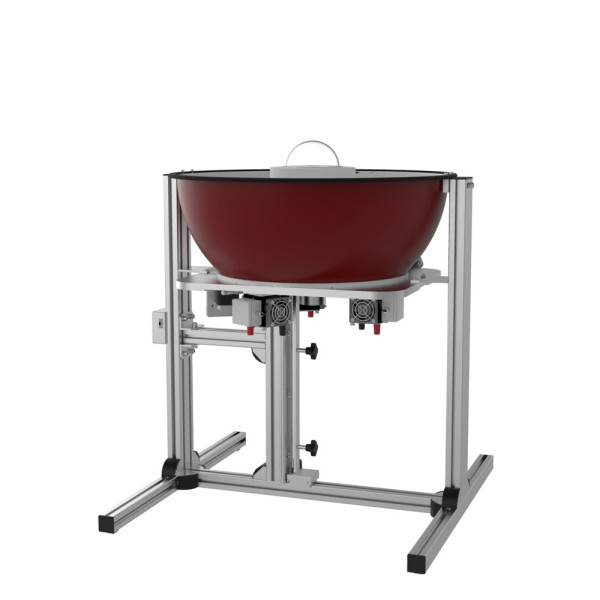
Fig. Open integrating sphere with transparent dome
White balance with changing light conditions
White balancing with three different light spectra makes it possible to test the camera under different lighting conditions matched to its intended applications. These spectra are produced using an optical correction filter in conjunction with the halogen lamp. Every spectrum, defined by the color temperature, requires a change of the halogen spectrum. This is set by adjusting the current of the halogen lamp. An RGB monitor detector allows for correction of the color temperature of the three halogen lamps that are used.
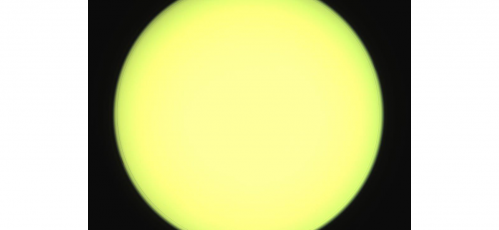
Fig.: Photo of the test camera
Homogeneous luminance distribution
The high uniformity requirements demand a very diligent lighting concept. Due to the pillars of the manipulator used for placement of the test cameras, three lamps with an ingenious baffle system are incorporated to produce indirect illumination of the hemispherical luminous area. The luminous fluxes of the three lamps must be matched to each other. This is made possible by variable apertures that are placed before the lamps. The user can decide whether the apertures should be adjusted manually or remotely. Remote-controlled apertures allow for automatic adjustment of the lamps after a lamp change. A photometric sensor within the RGB monitor detector is used as a reference to match the intensity of the three lamps.
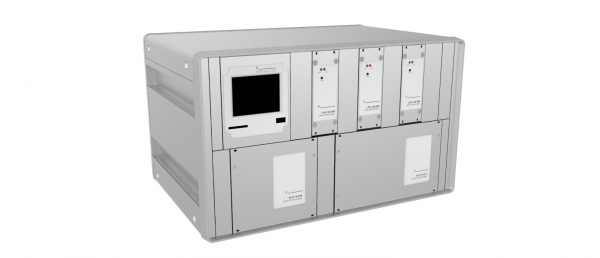
Fig.: Electronics for control, power supply and monitoring
Control powering and measuring electronics for the uniform light source
Gigahertz-Optik designs and manufactures the control and measuring electronics as modules that are specifically designed to meet the requirements of the uniform light source, its three lamps, the interchangeable filter wheel, variable apertures, and the monitor detector. The SC-O5 system controller is equipped with a powerful processor, large memory, and a variety of device interfaces. Manual operation is possible via a touch-screen display whereas the USB, Ethernet, and RS232 interfaces enable remote control. The system controller supervises the three precision power supplies (LPS-100-RM), the X1-PCBC light meter with an RGB monitor detector (CT.4501), the stepping-motor control of the filter wheel, and the motor-driven luminous flux aperture (optional).
Calibration
Calibration of the luminance and color temperatures, intensity of the three lamps, as well as the monitor detector is performed by Gigahertz-Optik’s calibration laboratory for optical radiation measurements. Calibration of the luminance distribution can also be requested.
References
Many of the uniform light sources described in this article are currently in continual use within various industrial environments. They are the preferred solution due to their short switching times between the light spectra, their long-term stability, reliability in continuous operation, and the lamp matching option. The ISS-50-LU-FE uniform light source is an excellent example of the flexible design possibilities offered by the UM modular integrating sphere construction kits from Gigahertz-Optik GmbH.